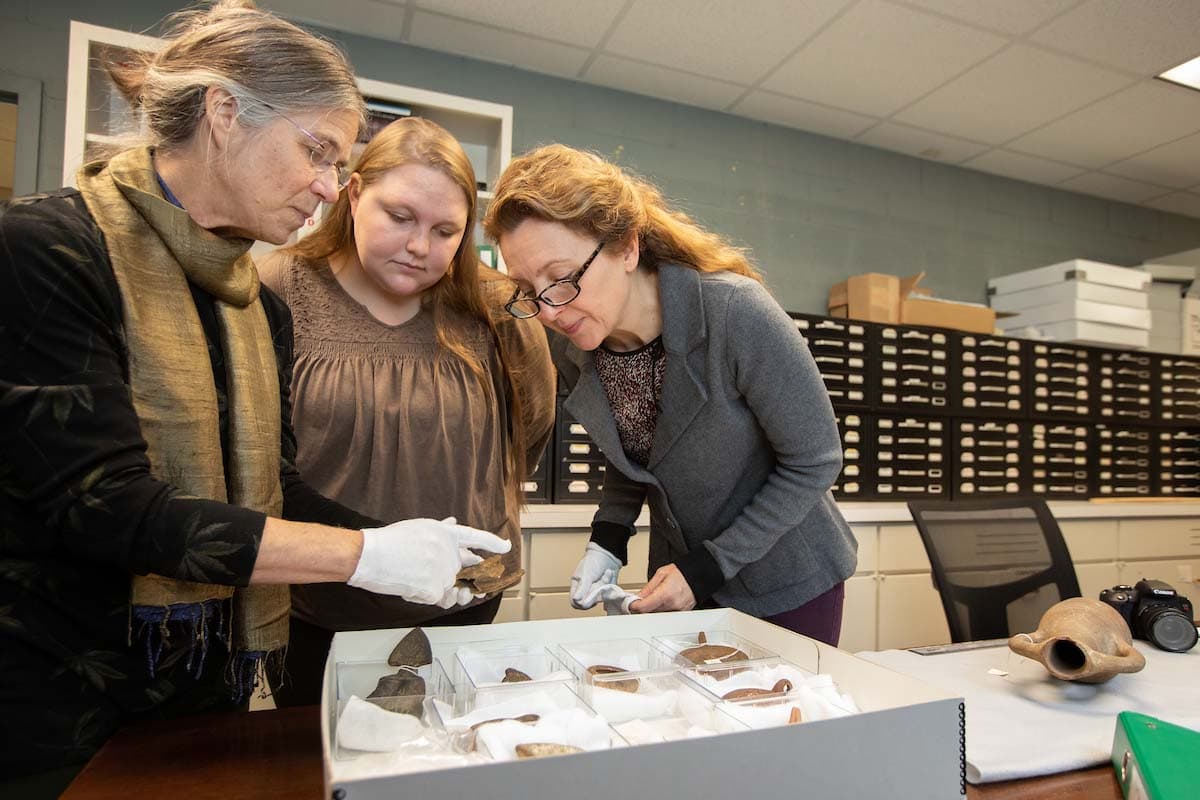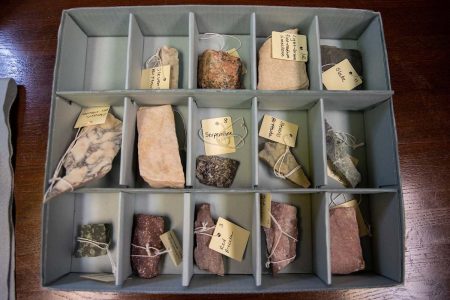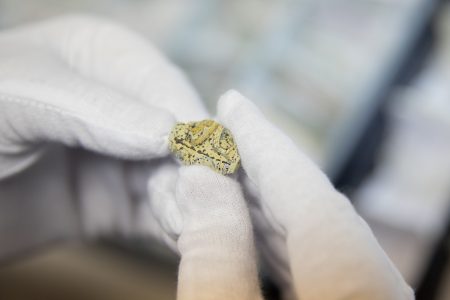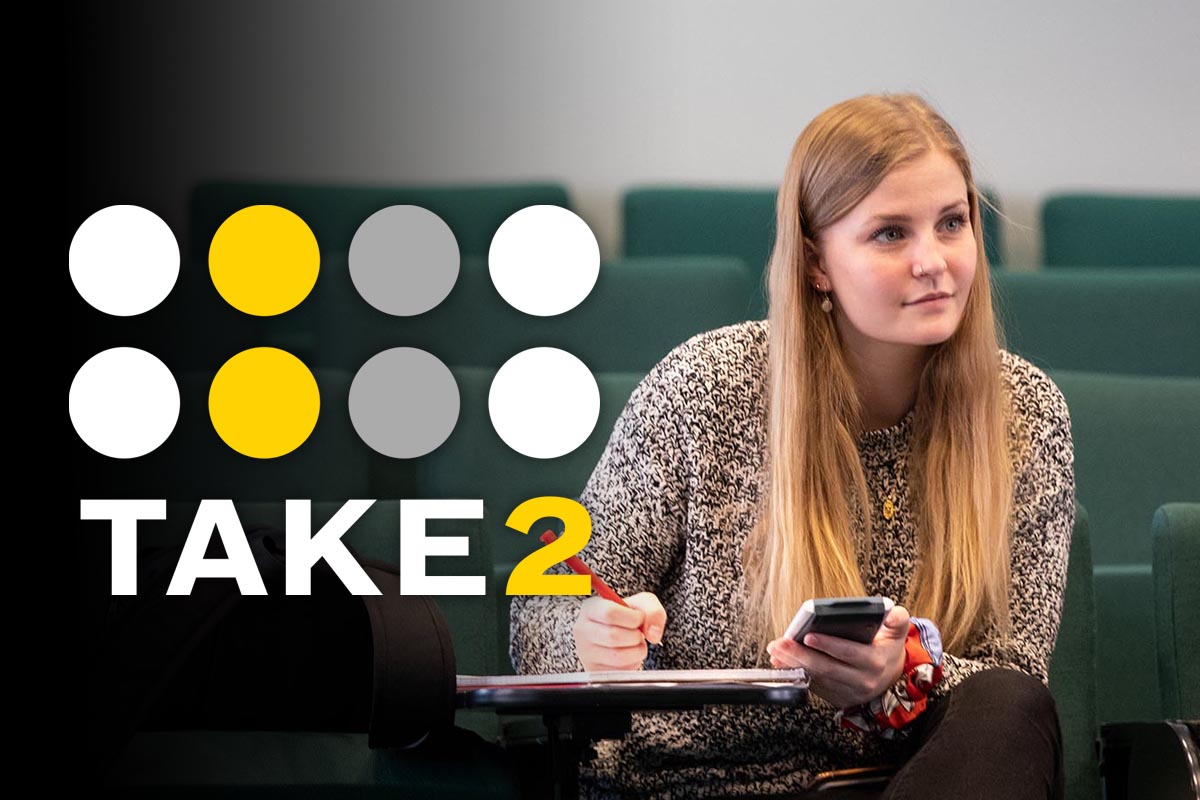Historic Connections: New Ancient Collections Room creates opportunities for students

Susan Stevens, a classics professor, Sara Primm ’20, and Andrea Campbell, an art history professor, work in the new Ancient Collections Room.
In class recently, Susan Stevens and her students were using the new Ancient Collections Room to discuss the ancient Roman coins the students were researching for an exhibition for the library. A student glanced over at one of the nearby cabinets and asked about the contents.

The new Ancient Collections Room provides easier access to a large collection of ancient artifacts.
“This was a perfect opportunity to pull out other artifacts so that we could have a conversation about them,” said Stevens, a classics professor. “There’s nothing like first-person contact. Looking closely and touching objects is so entrancing.”
When Andrea Campbell, an art history professor, talks about the four styles of Roman wall painting in her classes, she uses fresco pieces from the collection to help students see the differences in person.
These teachable moments may not have happened if it weren’t for the new Ancient Collections Room. Previously, the collection of ancient pieces was stored in a closet near Stevens’s office in the Psychology Building.
When artifacts were used for a class, they had to be hauled down several flights of stairs and across campus. Now, the classes and small groups can simply meet in Room 416 in Leggett Building.
“Fortunately, we have a teaching collection, made up of objects that are meant to be touched,” Stevens said. “And the new space makes the collection much more available.”
Consisting of inscriptions, marble, bronzes, terracotta figurines, and more, Randolph’s collection includes artifacts dating as far back as 5th century B.C. Many are complete objects, such as ceramics, and coins, that were purchased by the late Herbert Lipscomb, a Latin professor. Others are fragments of glass and mosaic from published archaeological excavations.
“Most of our objects are pretty mundane,” Stevens said. “They contrast with the fabulous things you see in museums, but I think it’s wonderful. Ours are objects that were used in everyday life. So you are not so much awestruck by their beauty as you are by the fact that you can see someone using this.”

Sara Primm examines a fragment from ancient Rome.
Stevens and Campbell worked with Sara Primm ’20 to move the collection to its present location and to begin updating its catalog as part of a Summer Research project. Haley Patterson ’22 also helped document and catalog artifacts as a student worker this year.
“It is always a challenge to convey the appearance of three-dimensional works of art using projected images in a classroom setting,” Campbell said. “Using artifacts from the Ancient Collections Room offers a wonderful opportunity for my students to be able to see what a Roman mosaic or fresco actually looks like. My hope is that when students are able to hold these objects, they will realize that history is near at hand and that they can step in at any time to take part in the process of learning about and creating history.”
Together, they’ve created a place that will provide more hands-on experiences to students, especially museum and heritage studies majors, who now have easy access to the College’s numerous collections (art, natural history and archaeology, and ancient collections).
“All students have the opportunity to gain the various knowledge and skills it takes to properly manage different collections right here on campus,” said Primm, who is a history and museum and heritage studies major.
The collection allows all students to connect with history no matter what their interests, Patterson added.
“It’s amazing to get this chance to see and hold pieces that either connect to what I’m learning or that have survived for thousands of years,” she said. “I’m holding history.”
Tags: Ancient Collections Room, Andrea Campbell, art, art history, classics, museum and heritage studies, natural history collection, Vita No. 8
